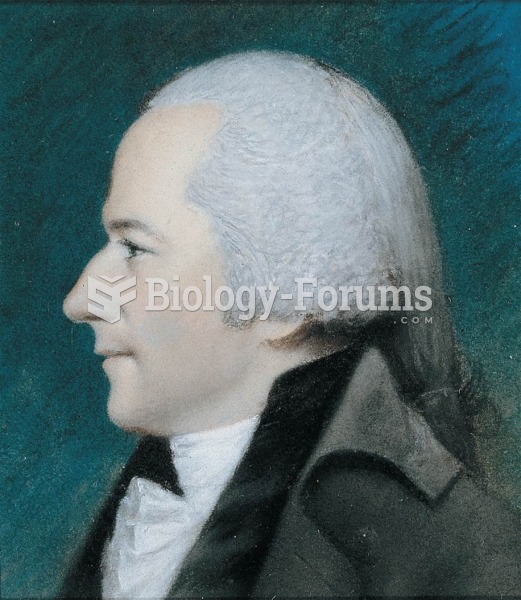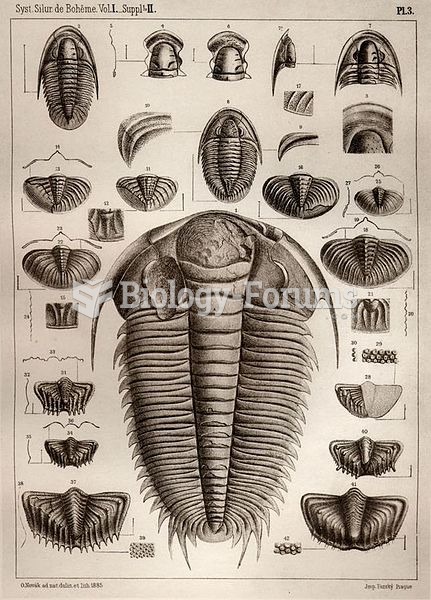|
|
|
The ratio of hydrogen atoms to oxygen in water (H2O) is 2:1.
Elderly adults are at greatest risk of stroke and myocardial infarction and have the most to gain from prophylaxis. Patients ages 60 to 80 years with blood pressures above 160/90 mm Hg should benefit from antihypertensive treatment.
Children with strabismus (crossed eyes) can be treated. They are not able to outgrow this condition on their own, but with help, it can be more easily corrected at a younger age. It is important for infants to have eye examinations as early as possible in their development and then another at age 2 years.
Sperm cells are so tiny that 400 to 500 million (400,000,000–500,000,000) of them fit onto 1 tsp.
Hippocrates noted that blood separates into four differently colored liquids when removed from the body and examined: a pure red liquid mixed with white liquid material with a yellow-colored froth at the top and a black substance that settles underneath; he named these the four humors (for blood, phlegm, yellow bile, and black bile).
 The four ways in which animals exchange heat with the environment are radiation, evaporation, convec
The four ways in which animals exchange heat with the environment are radiation, evaporation, convec
 “To confess my weakness,” Hamilton wrote when he was only fourteen, “my ambition is prevalent.” This
“To confess my weakness,” Hamilton wrote when he was only fourteen, “my ambition is prevalent.” This





